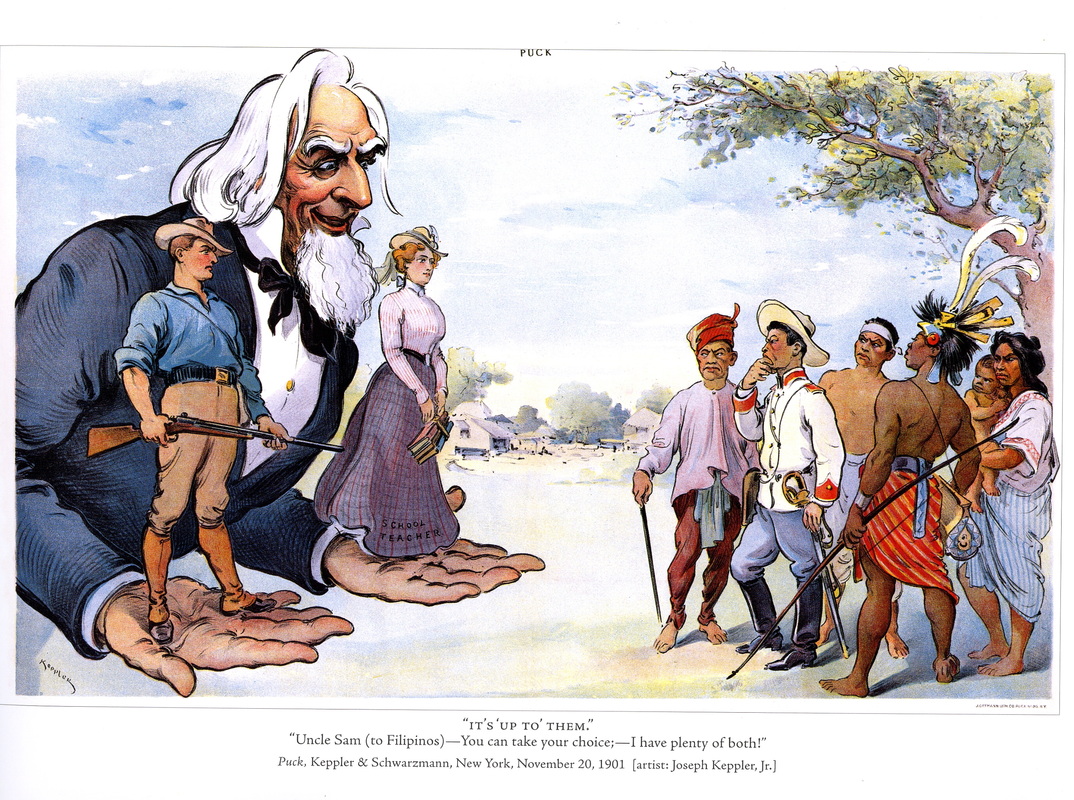22 All That Glitters is Not Gold
A Gilded Age
Jim Ross-Nazzal and Students
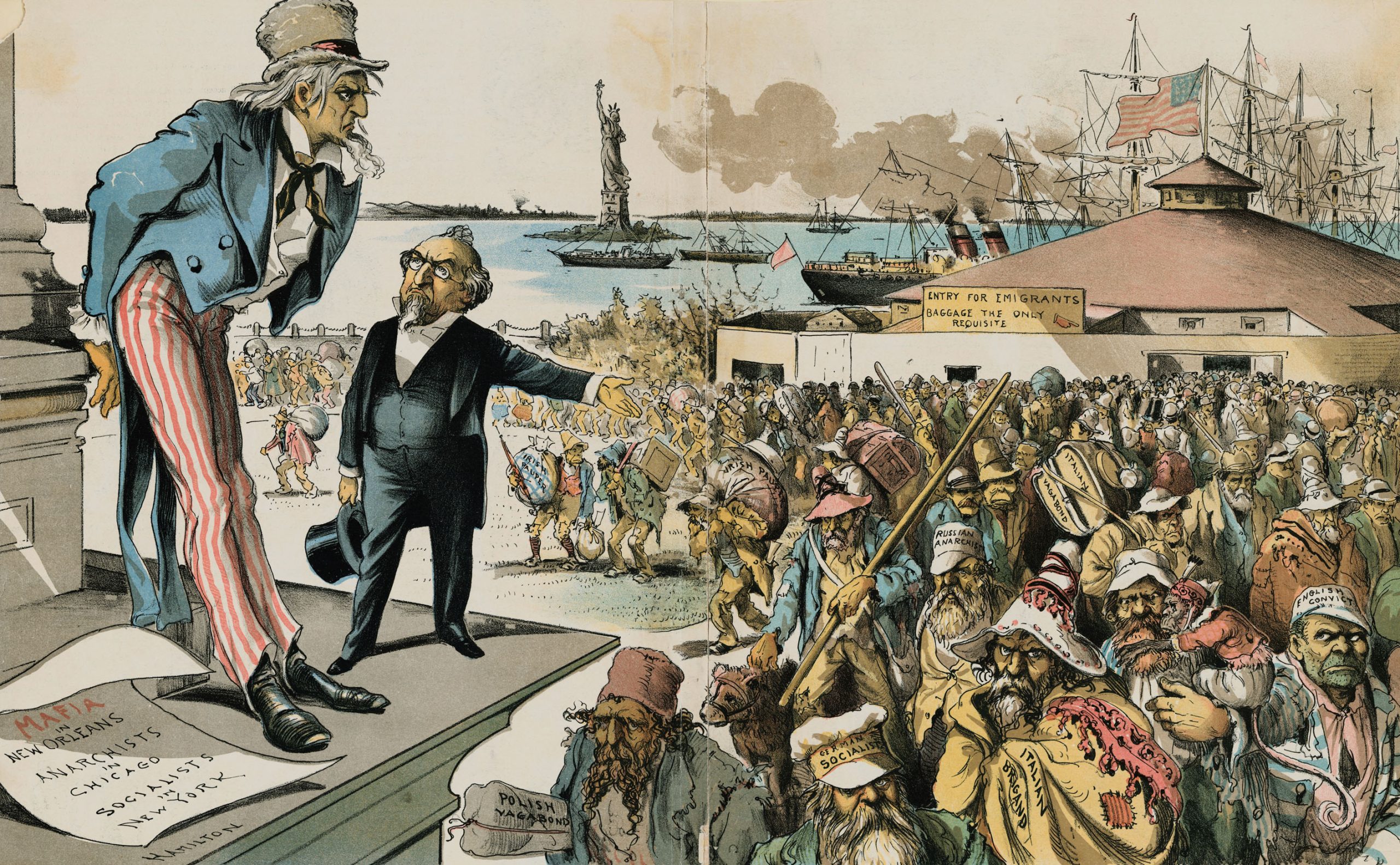

The editorial cartoon on the top, from 1891, (“Where the Blame Lies” by Grant Hamilton) demonstrates an Uncle Sam angry with the New Immigrants who are over populating New York, Chicago and New Orleans. From the Library of Congress website: “Cartoon shows a man holding a top hat in one hand and gesturing toward horde of arriving immigrants labeled “German socialist,” “Russian anarchist,” “Polish vagabond,” “Italian brigand,” “English convict,” “Irish pauper,” etc., at Castle Clinton in New York City. A scowling Uncle Sam leans against a building, at his feet is a sheet of paper on which is written, “Mafia in New Orleans, Anarchists in Chicago, Socialists in New York.” The man (Judge) says to Uncle Sam: “If Immigration was properly Restricted you would no longer be troubled with Anarchy, Socialism, the Mafia and such kindred evils!”[1]
The editorial cartoon on the bottom is lamenting Donald Trump’s immigration policy, which smacks of Gilded Age ideas on some immigrants. Trump sought to ban all Muslims from entering the United States,[2] called Mexican immigrants drug dealers and rapists,[3] wondered openly why the US allowed people from “shit hole countries” from migrating to the US,[4] and promoted people from Norway to move to the US.[5]
Some of my students were interested in women and New Immigrants so they did some research and came up with a short essay, to include some examples of their activism. Here are some excerpts:[6]
“Mary Harris known as Mother Jones was born in Ireland, she moved to Canada with her family to escape the potato famine. She moved to the United States when she was 23. She helped rebuild Chicago after the Great Fire and was known for being one of the first female labor activist. Mother Jones was always there for the needs of others. She began her career as a “hell raiser” as she would put it. She survived the death of her husband, children of yellow fever. She recreated herself as Mother Jones, fighting with her for the rights of workers in age when families lived on a dollar a day.She had a tough life but made the best of what she had. Mother Jones was considered the most dangerous women of the early twentieth century. She [was active in] strikes against the railroad systems, coal, textile, and even brewery strikes. She exposed the disturbing truth of child labor and acknowledging the truth of the poverty of working families lived on dollar a day, the owners told them to be grateful for that dollar. America was advertising the freedom that they live by. She came from one of many families who made a difference.”[7]
“As women began to immigrate to the United States, many sought out labor jobs. For example, those who immigrated to the West coast (like the Chinese and Mexicans), worked in the agriculture fields or building railroads, whereas people who immigrated to the East coast started working in textile industries, factories, sexual workers, so on and so forth. Irish women were the only immigrant group that eventually outnumbered the men. About more than half of women factory workers were first- or second-generation immigrants. Those who did not secure paid employment, such as those who have families, contributed to the economy with laundries and keeping boarders. Those who worked at the West coast were fruit and plant pickers. However, after the United States enter World War two, many farm workers left agriculture jobs for higher paying factory jobs because the army needed more ammunition, tanks, clothes, etc.”[8]
“In the 20th century (1904-1909), Lewis Hine, an American photographer, was describes about the women immigrants in the United States. First thing to determine to stay in the US, some women need to pass the medical exam for immigrants that was organized by the immigrant’s department. The examination was occurred from the New York to the Ellis Island with a lot of women in the word, especially, Chinese women account for a high proportion of the US immigrant applications. The examination has two-parts like mental condition and physical condition, the average immigrant’s service remains 2-3 hours to take an exam. Also, the examinations of immigrants provide a detailed description of the physical examinations intended to weed out physically or mentally disabled immigrants. For example, in Ellis Island, they searched for a disease in the eyes called trachoma. This eye disease cause blindness and it can also lead to death. Nearly 50% of those who had to be examined further before registration were due to this eye disease. The immigrant was mark with the letters Ct. If the doctors later on could determine the diagnosis trachoma the immigrant was sent back home again. So, the examination occurred to reduce a lot of diseases for the US citizens, especially, sexual diseases.”[9]
“Emma Goldman was born in a Russian empire to a Jewish family and moved to the United States in 1885.She was known for speaking up about women’s rights. She wasn’t really involved in women’s suffrage more so in the rights of birth control. She was arrested twice because she was lecturing women about birth control. At this time birth control was illegal and unwanted by a lot of men. She believed promoting birth control would be better than abortion. After trying to assassinate Henry Frick she was sentenced to two years of prison. After getting out she was deported back to the Soviet Union where she spoke up about a lot of things. Goldman was known as a free-thinking rebel woman. She wrote about prisons, atheism, freedom of speech, militarism, capitalism, marriage, free love and homosexuality.”[10]
Some exciting new inventions, devices, and applications that characterized the Gilded Age include elevators which made vertical construction feasible. Actually not elevators but a reliable emergency brake developed by a fellow named Elisha Otis in the 1850s received a patent in 1861. Once city planners had the space to begin using steel to rebuild cities, they built up not out thus using new technologies such as the relatively new emergency brake.
But mass transportation was on the minds of those city planners and so trains, both subterranean and elevated were put to task in cities such as New York, Boston and Chicago. Of course trolleys were the first form of mass transportation but they were slow and took up space that was needed for other projects and so as buildings encroached on the original trolley lines, cities like New York dug subways and cities such as Chicago elevated the trains above the din of the trolleys.
Which means that by the 1890s cities resemble what we would recognize today and that is due in part of the fires that swept through cities during the Gilded Age. Old cities were built out of wood. Most cities did not have professional fire departments so when fires erupted various things could have happened to include a semi professional volunteer fire brigade to people who just grabbed buckets and formed lines to political bosses who controlled their own fire fighting operations. Ultimately, when the cities burned to the ground, the new versions were built with steel, were built up because of the widespread use of the emergency brake for elevators, and the use of mass transportation was evident. But that was in the North and in the urban centers out West (Seattle, Denver and San Francisco). The more things changed, the more they remained the same in the South, especially for African Americans.
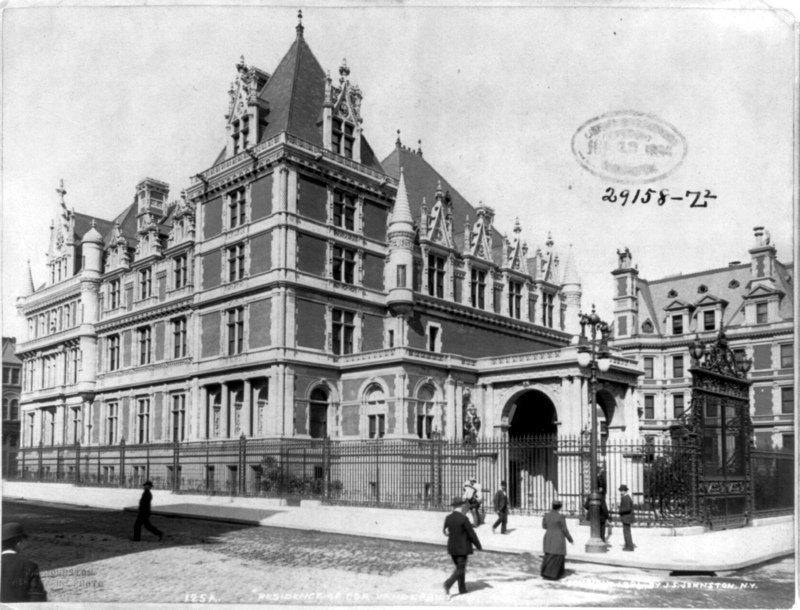
In 1871, a fire of massive proportions, unseen by anyone in this country spread across the area spawning tornadoes of fire. The fire destroyed about 280,000 acres of land, killing around 1500 people, amd cause $5,000,000 in property losses not counting the loss from the timber industry from 2,000,000 the trees destroyed. It was the worst fire in US history. When people read this they proably think about the Great Chicago Fire of 1871. And you’d be wrong. The fire that killed 1500 people was the Peshtigo Fire:
“Worst hit was the town of Peshtigo and the surrounding territory. The area had been undergoing an unparalleled drought. The citizens of Peshtigo had become used to the smell of ashes and thought nothing amiss when they retired on the night of October 8, 1871. Suddenly “all hell rode into town on the back of a wind.” Many rushed toward the river, some took refuge in basements. 75 persons who remained in a boarding house perished. A considerable portion of the survivors were huddled in a low, marshy piece of ground on the east side of the river. The number of dead in the blaze in the town of Peshtigo has been variously estimated at from 500 to 800. Only two buildings still stood after the fire, and the newspapers of the day wondered how some persons came through the disaster while others were burned to ashes within ten feet of them, or how the heavy iron fire engine could be melted without scorching the paint on wood two feet away. The fire also threatened the towns of Menominee, Mich., and Marinette, Wis., and licked at the outskirts of Green Bay.”[11]
The reason why you’ve never heard of the Peshtigo Fire is because the Peshtigo Fire happened at the same time as the so-called Great Chicago Fire. The Chicago Fire, with the myth of Miss O-Leary’s cow, made the news, while as nobody knew of Peshtigo, Wisconsin, even today if you go to the History website the “On This Day” they only mention the Chicago Fire. That site has an essay on the Chicago Fire and in the middle is these two sentences: “Did you know? The same day the Great Chicago Fire began, a fire broke out in Peshtigo, Wisconsin, in which more than 1,000 people perished.”[12]
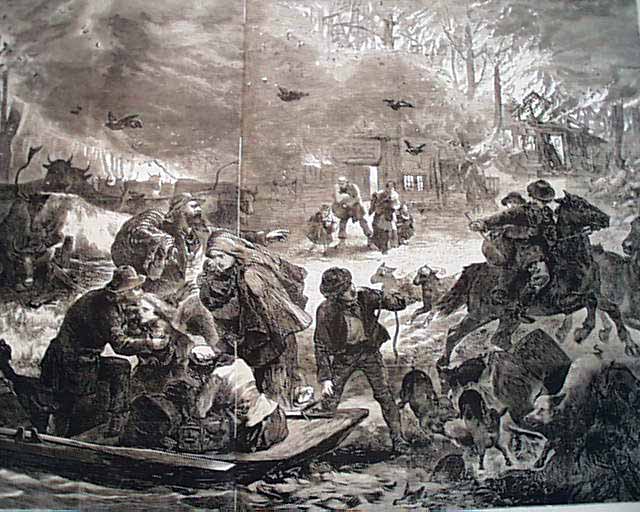
Sharecropping was the norm in the South. And because of which, black farmers in particular were tied to the land generation after generation not being able to get out from under the credit system. As one source puts it, “As agriculture became less rewarding, more and more farm owners lost their farms when they could not repay bank loans and their mortgages were foreclosed on or they could not pay their tax liabilities and their farms were auctioned off as a result. During the Gilded Age, more and more farmers lost their land and slipped down the agricultural ladder into tenant farming, sharecropping, and the crop-lien system. Tenant farmers rented the right to farm someone else’s land for a cash payment. Since money was so scarce (especially in the South following the loss of the Civil War), landless farmers would farm someone else’s land and at the end of the growing season would give up a predetermined share of whatever they grew as the rental payment – 1/3 of any cotton crop and 1/4 of any grain crop.
Since food and clothing were necessary during the growing season and because of poverty and a scarcity of money in rural areas, the crop-lien system emerged and spread during the Gilded Age and beyond. A sharecropper could obtain food, clothing, and other necessities of life on credit from either the landowner or a credit merchant during the growing season in return for a contractual lien against whatever share of the crop in the field was sufficient to meet the credit they were extended plus interest. The landowner or credit merchant charged a credit purchase price that was approximately 60% higher than the cash purchase price. Interest rates were generally unspecified until the end of the growing season but averaged nearly 25% annually. By the time the crop came in, it was all gone to the landowner for the right to farm the land and to the credit merchant for food and clothing. Indeed, most sharecroppers under the crop-lien system ended the year in debt to the credit merchant and were thus legally obligated to continue the relationship the next year to pay off the debt. Year after year, the landless farmer fell deeper in debt. Many were trapped for life. The system hurt all the more because the credit merchant could dictate the crop that would be grown by croppers, he extended credit to. In the South, that meant cotton because it was non-perishable and could always be sold somewhere at some price. This, however, exacerbated the problem of overproduction and depressed the price of cotton even further. It was an endless cycle.”[13]
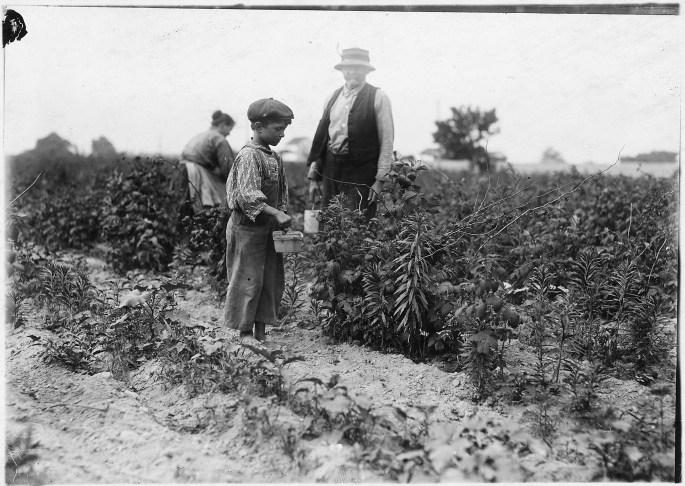
America realized a new aristocracy. There was a tremendous abyss between the halves and halve-nots. There was no social safety net, no federal support or supervision of the workplace such as the Occupational Safety and Health Administration, Office of Equal Opportunity, or the Fair Labor Standards Act. Workers were on their own. When the machine they were working on caught their sleeve dragging their arm into the machine, crippling the worker, there was no tough, smart, attorney waiting to take the case to sue the employer. Workers were on their own. Success was predetermined by God and Nature. Somewhat Darwinian. Here is what J.D. Rockefeller (Standard Oil) said about his success: “The growth of a large business is merely a survival of the fittest… It is merely working out a law of nature and of God…”. Similarly the railroad tycoon J.J. Hill said “The fortunes of railroad companies are determined by the law of the survival of the fittest.” So Hill’s railroad empire was because his railroads were the most fit, while those left in the dust were inefficient, ineffective, and generally incapable of success.[14]
The sociologist William Graham Sumner supported the beliefs of Rockefeller and Hill but Sumner also argued that the success of men such as Rockefeller, Hill, Vanderbilt, Carnegie, and so many others were good for society. In What Social Classes Owe to Each Other (1883), Sumner wrote “The millionaires are a product of natural selection … the naturally selected agents of society for certain work. They get high wages and live in luxury, but the bargain is a good one for society.
And, failure was the result of some intrinsic inability to succeed. A weakness brought about by Nature. The poor are poor because they come from the poor. Prostitutes are prostitutes because they come from prostitutes. Same thing for alcoholics, drug addicts, and all sorts of criminals. These are the worst of Nature and they should be left alone to just die out, as opposed to be helped, which would only prolong the inevitable, as professed Sumner: “A drunkard in the gutter is just where he ought to be, according to the fitness and tendency of things. Nature has set upon him the process of decline and dissolution by which she removes things which have survived their usefulness.” Drunks, prostitutes, the poor, are no longer useful to society in other words.
These sentiments are not unheard of in contemporary times. In 2017, Secretary of Housing and Urban Development Ben Carson said that successful people have the “right mind set” and will thus succeed whatever challenges befall them but that the converse is also true, that “poverty is a state of mind.” In other words, regardless of all the help and benefits some people would receive they are bound to stay poor because they think like poor people, they act like poor people, thus they are people.[15]. In response, Joel Berg, the CEO of Hunger Free America said “All Americans, but particularly one of the top federal anti-poverty officials, should understand that the main causes of U.S. poverty are economic, not mental. Overwhelming facts and data prove that the main causes of poverty are low wages, too few jobs, and an inadequate safety net – not some sort of personal attitude problem.” Congressman Paul Ryan (R-WI), the Speaker of the House and thus third in line to be President, said the problem was “lazy inner city men.” “Inner city” was code for African American.[16] And, “We have got this tailspin of culture, in our inner cities in particular, of men not working and just generations of men not even thinking about working or learning to value the culture of work, so there is a real culture problem here that has to be dealt with,” Ryan said.[17]. So there is a character flaw among African American men that is generational, that has been passed down, that is Darwinian in other words. Paul Ryan is floating a 21st century version of Social Darwinism in those comments.
Finally, in 2017 Donald Trump said that he did not want any poor people in his Cabinet. He only wanted wealthy people because wealthy people were successful people, this suggesting that poor people lacked the ability, innately, to be successful, to have ideas of success, or to be able to think about success.[18]
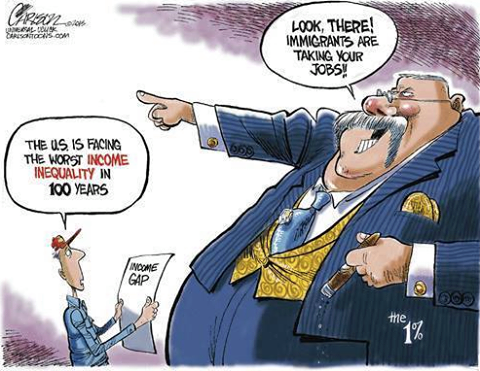
Women’s (and men’s) roles began changing in the Gilded Age. Women started to go to college in larger numbers than ever before. This suggested more families either had the money to support their daughters education or more parents evolved on the need of women to become classically educated, or both. 1,378 women earned their BA in 1870. That number jumped to 5.237 by 1900. No women obtained the MA in 1870 while 1,583 had done so by 1900 and while only one woman had a PhD in 1870, 382 had accomplished that feat by 1900.[19] Some feared too much education would harm women. All that blood flowing to their brains and away from their reproductive organs could lead to “infertility, sickly babies” and as most women in college were white, Dr. Edmund Clarke feared the loss of reproductive capability in exchange for education would lead to the “decline of the race.”[20]
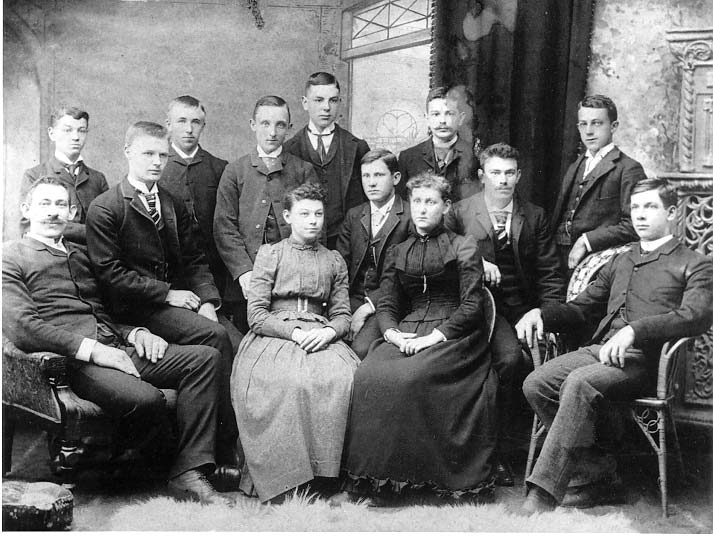
Women also became more athletic picking up golf and archery, playing tennis and engaging in swimming matches. They climbed mountains, hiked the Amazon River, and explored African on foot. Suggesting that class played a role in being this New Woman. Weight also consumed many young college women and the word “diet” became a verb with doctors diagnosing eating disorders such as anorexia.[21] Finally, the bicycle craze affected women equally as men. Bicycle clubs sprang up throughout major cities and initially members of the medical community earned that if women rode bicycles in the same position as men, women could become sexually aroused which would lead to a loss of their virginity. “Reformers such as Frances Willard of the Women’s Christian Temperance Union made a point of appearing publicly on their bikes to persuade parents that cycling for girls was healthy and fun.”[22]

Women undergraduates sometimes involved themselves in same-sex relationships, called smashing. They would write love notes to each other. Live together, walk hand-in-hand to classes. Other women noted differences between college and non-college men. Here is a quote from a UC-Berkely student, 1898: “I waited in the pleasant parlor of the Girls’ Fraternity for the president of the Associated Women Students to appear. A table with some dainty tea things stood invitingly by, delightfully suggestive of feminine taste the world over. The president, Miss Marion Whipple of Los Angeles, is a typical college woman, tall, self-possessed, with an intellectual face. She grasped my idea instantly and settled back luxuriously in her chair, the better to discuss the college-bred man. The college men of Berkeley seem rather young to me, as I compare them with the Eastern college men I know. I think it is because we are allowed to enter with less required work to our credit. As to their attractiveness? Certainly the environments are the most favorable for proper development, the environments of college life, but everything depends on the man. Without the right material to act on, the environment can do nothing, of course. One always wonders why some men ever come to college. I think men who never go to college sometimes are quite as attractive as the college-bred men, but it means more when they are. They deserve more credit for what they have taken on of polish.”
“How do I regard the Berkeley men from the social standpoint? They fall into two classes — one class, the small minority, who are discourteous and rude, I will not discuss. Their faults are due most likely to wrong home training; but the other class, the courteous, helpful men, I will discuss. They are thoughtful of little things, and delightful at parties. Of course, there are some who have been spoiled, but one expects that. Then they are enthusiastic over athletics and the true college woman likes that — she is enthusiastic herself. Are not Berkeley men of the opinion that the really nice, high-bred sort of girl doesn’t take a college course? Oh, no indeed! That is a tradition that has been handed down, but it is pretty well exploded now. They like us — that is, collectively. We are entirely welcome here.”[23]
As women became encroached on men’s academic sphere and became more athletic, those pushed men to become uber-masculine. Wrestling, boxing, and football became three of the most popular physical feats on college campuses. Rebecca Edwards argued that more and more colleges, such as Harvard, focused less on education and more on “strengthening masculinity” by promoting men’s sports teams such as rowing and baseball. And football was quickly surpassing baseball as the new substitute for war. The original game was violent. It was not unusual to have players carted off the field with broken bones, bones broken purposefully by opposing players. Even death was not unheard of. But in 1904, 21 young men died playing football and that was too much for many Americans, who called to put an end to the game on college campuses. President Teddy Roosevelt loved football so he brought together the leaders of the major football powerhouses of the time, such as Harvard, and impressed upon them the need to make football less deadly and the National Collegiate Athletic Association was born, thus Teddy Roosevelt saved college football.
Every generation thinks they were the first to reel against their parents, that there music is the best ever, and that they invented sex. ‘Grease My Pecker Sally Ann,’ ‘Hard Pecker Reel,” “Pootang on the Levee,” and “Take Your Fingers Out of My Pants” were popular songs among certain subgroups of American society:
Lead the ace and trump the king / Let me feel that pretty little thing / Up and at ’em, everybody dance / Goose that gal and watch her prance / Ladies do the shimmy, down go her britches / In goes a little thing about six inches.[24] How different are those lyrics from something more recent. For example, “I Hit it First” by Ray J. This was a song about his relationship with Kim Kardashian (and a sex tape she released) that took place long before she married husband number two, Kanye West. Her first husband was a player in the NBA:
But we all know I hit it first
I hop in the club and boppers show love, and I don’t even put in work
I hit it, I hit it, I hit it, I hit it, I hit it, I hit it first
I hit it, I hit it, I hit it, I hit it, I hit it, I hit it first
But now baby chose to go West
Two major types of reform regarding sex was Free Love and Voluntary Motherhood. The former was a reaction against the reality that women were mere possessions of their husbands and so husbands and the “right” to sexual access as he saw fit, which included what we would call today marital rape. Of course such a thing is a late-20th century phenomenon. In the Gilded Age female reformers wanted women to have the right to determine when she has sex with her husband. Along the lines of women being mere possessions, Voluntary Motherhood was the idea that women had the right to determine when (and even if) they got pregnant.[25]
But the event that demonstrated most effectively the characteristics, the successes and excesses of the Gilded Age, was the 1893 Colombian Exposition -the Chicago World Fair. Thomas Edison unveiled the first movie. Entitled “The Sneeze,” the movie last just a few seconds -long enough for a man to sneeze (“The Kiss” comes out a few years later and lasts about 60 seconds). The first pancake-in-a-box kit was introduced: Aunt Jemima, played originally by Nancy Green. Dressed in what was supposed to look like slave garb and speaking in broken English suggesting that English was not Aunt Jemima’s first language, was another indication of the homage to slavery this was. Aunt Jemima said two things about American society. First, society was speeding up. We no longer had the time to mix the ingredients to make pancakes. All we had time for in the morning was to add some milk or water to Aunt Jemima’s pancake mix. Second, American society was regaining its wealth because buying prepackaged good, and in such small quantities, was more more expensive than buying in bulk and making the pancake mix oneself. Likewise, Josephine Cochrane introduced the first dishwasher. This time saving device was also supposed to take the place of at least one domestic servant. A local candy maker invented gum. The first flavor was Juicy Fruit. William Wrigley Jr. was so successful that one day he will own a baseball team and build a stadium for them, named after himself. The Ferris wheel is introduced to the US. So too was the vertical file -something graduate students were probably using at the University of Chicago, which was created in part by John Rockefeller who needed administrators. the University of Chicago offered an advanced degree of study in business called the MBA. Pabst Malt Extract won the beer contest. The award was a blue ribbon and so the name change followed to Pabst Blue Ribbon. The first diet soda came out about the same time as those doctors were identifying eating disorders in young women and women began to diet. There was the first hamburger and a moving sidewalk. But the big hit was the country’s first serial killer, Herman Mudgett, aka Henry Howard Homes, aka H.H. Holmes. Mudgett got a job as a doctors for a hotel at the World’s Fair. He also ran a mortuary for the fair. He was eventually suspected of killing around 200 people. Mainly women but some men and children. He was convicted of killing 27 and put to death on May 7th, 1896.
To make gold there is a byproduct. That byproduct is called dross. Dross is the scum, the collection of impurities left behind. The dross in American society was photographed by Jacob Riis. His photographs were wildly popular and led to many reforms to clean up cities and provide aid to the poor children. We will later discover that many of his photographs were arranged, staged. Massive poverty existed. Riis just brought various elements together to shoot super poverty. Even poverty was gilded.

I’d like to thank Brittany Gage, Gabriel R. Garza, Neiman Gilbert, Jose Gutierrez, Toni Lott and Thao My Le for their interest in women’s history, Fall 2019. Their contribution made this chapter more interesting.
As with the other chapters, I have no doubt that this chapter contains inaccuracies, therefore, please point them out to me so that I may make this chapter better. Also, I am looking for contributors so if you are interested in adding anything at all, please contact me at james.rossnazzal@hccs.edu.
- https://www.loc.gov/resource/cph.3g05739/ ↵
- http://fortune.com/2016/06/28/donald-trump-muslim-ban/ ↵
- https://www.washingtonpost.com/news/fact-checker/wp/2015/07/08/donald-trumps-false-comments-connecting-mexican-immigrants-and-crime/?noredirect=on&utm_term=.03478d758f2e ↵
- https://www.cnn.com/2018/01/11/politics/immigrants-shithole-countries-trump/index.html ↵
- https://www.reuters.com/article/us-usa-trump-immigration-norway/thanks-but-no-thanks-norwegians-reject-trumps-immigration-offer-idUSKBN1F11QK ↵
- Following was written by Brittany Gage, Gabriel R. Garza, Neiman Gilbert, Jose Gutierrez,Toni Lott and Thao My Le in the Fall of 2019. ↵
- "Mother Jones : The Most Dangerous Woman In America: Eagle Library Search". 2019. Eds.A.Ebscohost.Com. ↵
- "New Beginnings: Immigrant Women And The American Experience - National Women’S History Museum - Google Arts & Culture". 2019. Google Arts & Culture. https://artsandculture.google.com/exhibit/new-beginnings-immigrant-women-and-the-american-experience/5gLSyiVkZcVkLw. ↵
- “Ellis island”-ORIGINAL: OCT 27, 2009- retrieved in 2019 https://www.google.com/amp/s/www.history.com/.amp/topics/immigration/ellis-island. ↵
- https://emmagoldmanpapers.tumblr.com/post/90384448555/the-social-aspects-of-birth-control ↵
- https://www.wisconsinhistory.org/Records/Article/CS1750 ↵
- https://www.history.com/topics/19th-century/great-chicago-fire ↵
- https://www.austincc.edu/lpatrick/his1302/agrarian.html ↵
- Both quotes come from Richard Hofstadter's Social Darwinism in American Thought in Google books https://books.google.com/books?id=Ty8aEmWc_ekC&pg=PA45&lpg=PA45&dq=%E2%80%9CThe+fortunes+of+railroad+companies+are+determined+by+the+law+of+the+survival+of+the+fittest.%E2%80%9D&source=bl&ots=Jr83k_bOQU&sig=ACfU3U0icmq8KkiSvqoj5ChgCCsOub31NA&hl=en&sa=X&ved=2ahUKEwjgm5bsms_gAhWlrIMKHbVdDUMQ6AEwAXoECAkQAQ#v=onepage&q=%E2%80%9CThe%20fortunes%20of%20railroad%20companies%20are%20determined%20by%20the%20law%20of%20the%20survival%20of%20the%20fittest.%E2%80%9D&f=false ↵
- https://www.npr.org/2017/05/25/530068988/ben-carson-says-poverty-is-a-state-of-mind ↵
- https://www.washingtonpost.com/news/the-fix/wp/2014/03/18/paul-ryan-poverty-dog-whistles-and-racism/?utm_term=.333d217114de ↵
- http://www.msnbc.com/politicsnation/ryan-generations-men-not-working#50873 ↵
- http://time.com/4828157/donald-trump-cabinet-iowa-rally-poor-person/ ↵
- Carl Degler, The Age of Economic Revolution, 1977, p. 169. ↵
- Rebecca Edwards. New Spirits: Americans in the Gilded Age 1865-1905, p. 118. ↵
- Ibid., p. 119. ↵
- Ibid. ↵
- https://clickamericana.com/topics/love-marriage/college-women-on-college-men-1898 ↵
- Edward, New Spirits, p. 131 and John D'Emilio (et al) Intimate Matters: A History of Sexuality in America, 1988, p. 188 ↵
- Edward, New Spirits, p. 143 ↵
